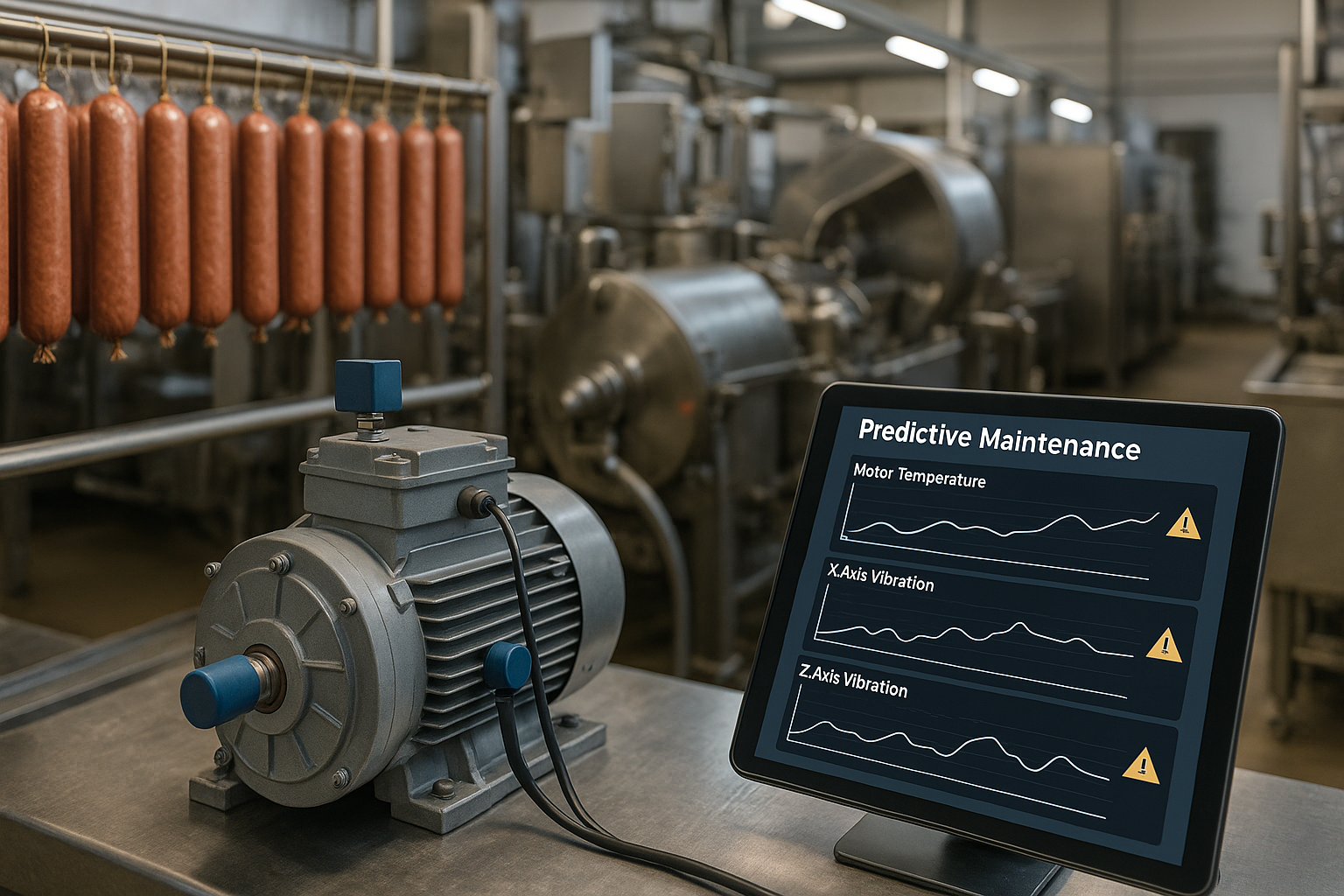Predictive maintenance in food manufacturing gets boost from AI and IoT technologies
Food production facilities, particularly those in continuous, high-throughput environments such as sausage manufacturing, face a unique combination of operational challenges. Equipment must operate under strict hygiene and safety requirements, while exposure to moisture, heavy loads, and round-the-clock usage increases wear and the risk of mechanical failure. Traditional maintenance practices often rely on scheduled inspections and manual observations, which can be both resource-intensive and ineffective in preventing sudden breakdowns.

A team of researchers from University College Dublin has unveiled a practical framework for integrating artificial intelligence (AI) and Internet of Things (IoT) technologies into predictive maintenance systems for food manufacturing, offering a significant leap forward in Industry 4.0 applications. The study published in Information demonstrates how machine learning can forecast equipment failures in real time and reduce costly production disruptions.
Titled Integrating AI and IoT for Predictive Maintenance in Industry 4.0 Manufacturing Environments: A Practical Approach, the research provides one of the first concrete demonstrations of predictive maintenance tailored to food processing facilities. The findings highlight how data-driven approaches can transform operational efficiency, minimize downtime, and establish a foundation for smart manufacturing in sectors traditionally underserved by predictive technologies.
Why food manufacturing needs predictive maintenance
Food production facilities, particularly those in continuous, high-throughput environments such as sausage manufacturing, face a unique combination of operational challenges. Equipment must operate under strict hygiene and safety requirements, while exposure to moisture, heavy loads, and round-the-clock usage increases wear and the risk of mechanical failure. Traditional maintenance practices often rely on scheduled inspections and manual observations, which can be both resource-intensive and ineffective in preventing sudden breakdowns.
The research points out the high cost of unplanned downtime in food manufacturing. Machine failures not only halt production but can also compromise product quality, safety standards, and regulatory compliance. Despite growing interest in AI and IoT-enabled predictive maintenance across industries such as automotive and energy, the food sector has been largely overlooked. The authors identify this research gap as a pressing issue, pointing out that predictive maintenance in food processing requires a tailored approach that addresses its distinct environmental and regulatory constraints.
The study makes clear that predictive maintenance is no longer optional for food manufacturers aiming to compete in the Industry 4.0 era. By proactively anticipating machine failures through data-driven methods, operators can move beyond inefficient periodic checks and reactive repairs, achieving higher productivity and lower operating costs.
How the researchers built their predictive framework
The study is based on real-world data collected over 11 months from a sausage production facility, where IoT sensor networks and enterprise resource planning (ERP) systems were integrated to capture both machine performance and production details. The Supervisory Control and Data Acquisition (SCADA) system recorded electric motor surface temperatures and vibration signals along multiple axes, while the ERP platform provided batch-level production data, including processed quantities.
A total of 39,470 data points sampled at ten-minute intervals formed the basis for machine learning model development. To ensure reliability, the team applied rigorous preprocessing methods, addressing missing data with forward filling and rolling mean techniques, and eliminating anomalies through K-nearest neighbors detection. Features were then scaled for uniformity, and additional predictors such as rolling averages, exponential moving averages, production load, time of day, weekday, and weekend indicators were engineered to capture both operational and contextual patterns.
The research team selected the ensemble learning algorithm XGBoost as the core predictive model, citing its ability to handle structured industrial data with limited historical records. Compared with alternatives such as Random Forests, Support Vector Machines, and recurrent neural networks like LSTM and GRU, XGBoost demonstrated superior accuracy and stability under the study’s data constraints. A sliding-window validation strategy was used to address discontinuities caused by sensor downtime, ensuring the model could adapt to real operational conditions.
Once trained, the predictive models were deployed via a REST API into a factory-level monitoring dashboard, enabling operators to receive real-time alerts. The framework was designed for practical on-premises deployment, ensuring data security and low latency while allowing flexibility for future integration with hybrid or cloud systems.
What the study revealed about performance and future potential
The predictive models focused on anticipating two key machine health indicators: motor temperature and vibrations along the x and z axes. Results showed a clear disparity in performance. Temperature predictions achieved near-perfect accuracy, with an RMSE of 2.04 and a correlation of 0.973, proving highly reliable for deployment in live manufacturing environments. The gradual and predictable nature of motor temperature changes, combined with the inclusion of lagged data, contributed to this strong outcome.
On the other hannd, vibration predictions were less accurate, with RMSE values of 6.06 for x-axis and 6.89 for z-axis, and correlation coefficients of 0.78 and 0.75 respectively. The researchers attributed this limitation to the absence of contextual metadata on the types and characteristics of products being processed. Different product loads generate distinct vibration patterns, but this variability could not be fully captured without production-specific data. The authors argue that incorporating such metadata in future studies will significantly enhance the robustness of vibration-based predictive models.
Despite this limitation, the study confirms the viability of AI and IoT-driven predictive maintenance in food processing. The temperature model provides a proof of concept that demonstrates how operators can preemptively address potential failures, preventing costly interruptions and improving overall system reliability. The researchers also emphasize that the framework is scalable beyond food manufacturing, as it can be adapted for other industries reliant on electric motors by tailoring the input variables to sector-specific conditions.
The implications extend beyond individual factories. By aligning predictive maintenance with Industry 4.0 principles, the approach contributes to sustainability by reducing waste, extending equipment lifespan, and optimizing resource use. The study also provides a pathway for SMEs in the food sector to embrace digital transformation in practical, measurable ways.
- FIRST PUBLISHED IN:
- Devdiscourse










